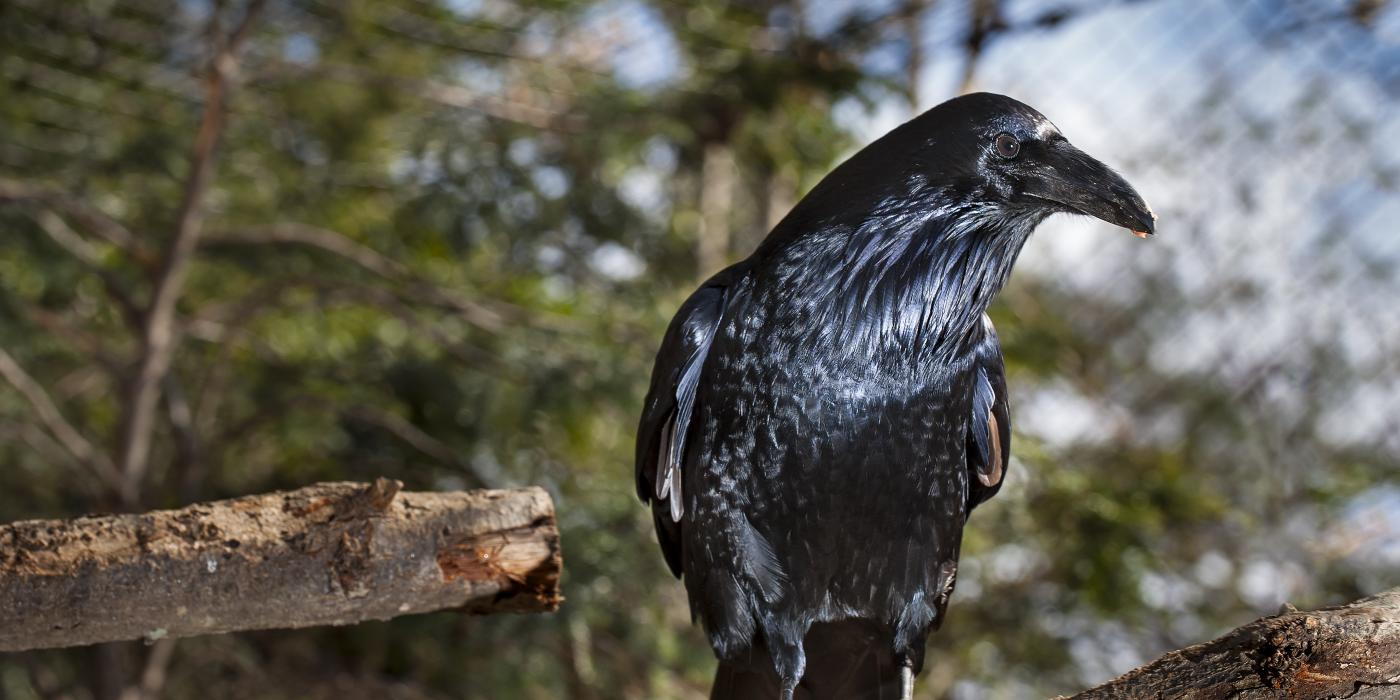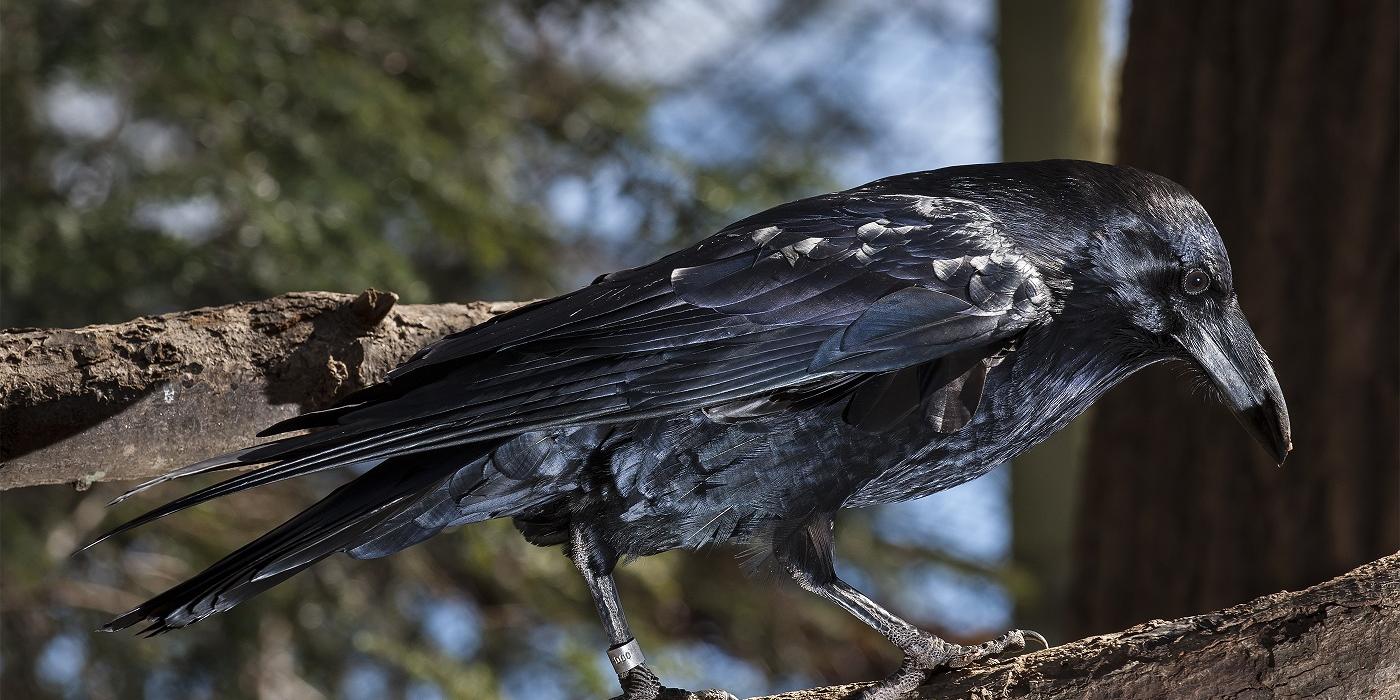Physical Description
Ravens are massive birds with a thick neck and distinctive shaggy throat feathers. Like other corvids, ravens have strong, large feet and long bills. Most ravens are a solid black. Ravens most closely resemble the common crow, but they soar in flight, more like a hawk. Another distinguishing feature from crows are their slender wings and wedge shaped tail.
Size
A large bird species, common ravens usually range in size from between 22 and 27 inches (56 to 69 centimeters) in height and between 1 and 3.5 pounds (0.7 to 1.6 kilograms.) Ravens have a wingspan of 45.5 to 46.5 inches (1 meter).
Native Habitat
The distribution of the common raven ranges is wide and encompasses a variety of habitats. They are found across the Arctic regions and temperate regions of North America and Eurasia and far south to the mountains of South America and North Africa.
Ravens are extremely common in woodlands, usually in coniferous forests and along rocky coastlines. While they prefer forests, ravens can survive in arid deserts and mountains in the West, but they are much less common.
Lifespan
In the wild, ravens can live to between 10 to 15 years. In human care, it is possible these birds could live to between 40 or 50 years of age.
Communication
Ravens are very communicative. More than 30 different vocalizations have been recorded, and in human care, they can mimic simple sounds--even human speech. They have a deep voice that they use to communicate through croaking "wonk-wonk" sounds.
Food/Eating Habits
Ravens are highly intelligent animals and can use their beaks to rip objects open, helping them find both food and shelter. They have been known to use tools to obtain food and aid in defending their territories. Ravens and other corvid species are the subject of multiple cognitive research studies focusing on their ability to learn and use tools.
In the wild, ravens are opportunistic feeders and their diet varies based on habitat and available food sources. They are omnivorous and will feed on everything from small mammals to nesting birds, eggs and berries. They will also eat carrion, scavenge from other predators and even from human landfills. A group, or a flock, of ravens will raid seabird colonies, consuming the eggs and young of these colonies. Ravens cache their food and hide it from other animals including other ravens.
At the Smithsonian's National Zoo, ravens are fed mice, crickets, wax worms, various fruits, a specialized meat eating bird diet of ground beef, hard boiled eggs and a few different types of commercial dry pellet feed.
Social Structure
Ravens are a generally monogamous species, some pairs even mating for life. Ravens will ride air currents and perform various aerial displays from tumbling tricks to acrobatics, and will even have mid-air sparring matches.
Reproduction and Development
Before beginning nest building or reproduction, ravens generally have to have a defined territory to defend. These territories and food sources are usually defended aggressively. Ravens' nests are built by both sexes and are large, bulky, bowl-shaped, and made out of sticks and twigs. A female raven will lay between four and seven eggs at once. Eggs are a dull greenish-blue color with brown spots. Females will incubate the eggs for about 20 days while the males hunt and bring food.
Conservation Efforts
Due to their extremely large range and the increasing population trend of the species, the raven does not qualify for a vulnerable or endangered status. The global population of the raven is estimated to be more than 16 million individuals and increasing. Habitat loss and the human threat of hunting and poisoning are the greatest threats to ravens.
Ravens are also sensitive to other forms of mistreatment by humans but none currently threatening enough to endanger this species. In general, ravens are highly adaptable to human environments and are able to exploit conditions created by humans.
Help this Species
- Reduce, reuse and recycle — in that order! Cut back on single-use goods, and find creative ways to reuse products at the end of their life cycle. Choose recycling over trash when possible.
- Share the story of this animal with others. Simply raising awareness about this species can contribute to its overall protection.
Meet the Animals
The raven exhibit is home to a female named Iris.
Iris is fully flighted and was hand-raised to be an education ambassador.
Animal News

Leaf-tailed Gecko Treated for Skin Cancer With Chemotherapy





